Benguet State University RESEARCH JOURNAL CHED...
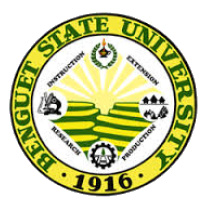
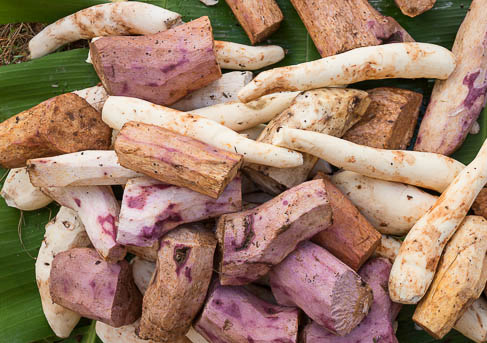
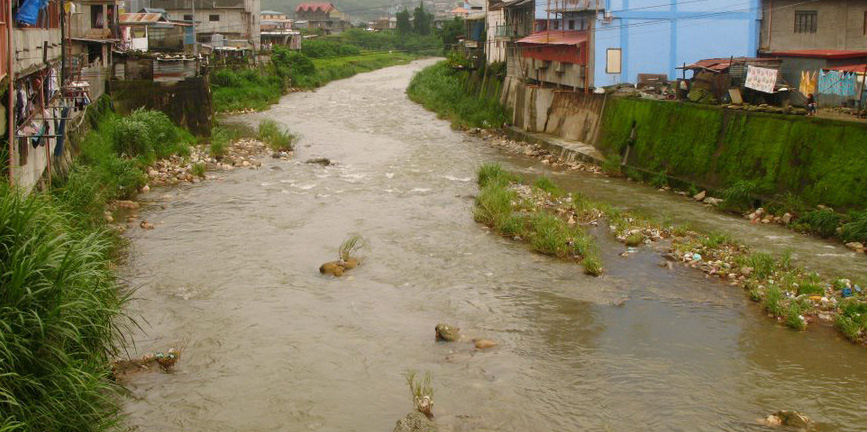


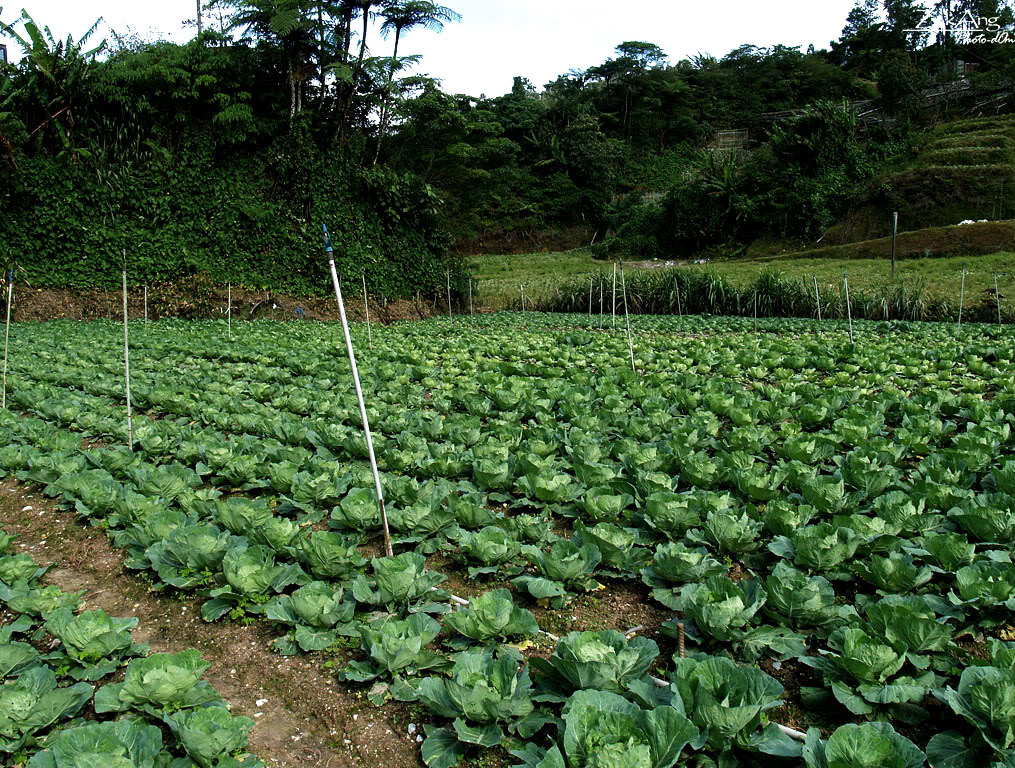
Benguet State University
RESEARCH JOURNAL
CHED Accredited Category B CMO No. 23 S. 2014
ISSN 0117-5297
No. 75
January-March 2016
Editorial Board
Editors-in-Chief
Bernard S. Tad-awan, PhD
Aurea Marie M. Sandoval, PhD
TECHNICAL EDITORS
Filmore Y. Awas, MDC
Kenneth A. Laruan, PhD
College of Agriculture
College of Forestry
Stanley F. Anongos Jr., MS
Percyveranda A. Lubrica, PhD
College of Arts and Sciences
College of Teacher Education
Manolita N. Alvaro, PhD
Valentino L. Macanes, MS
College of Teacher Education
College of Agriculture
Jose G. Balaoing, PhD
Sonwright B. Maddul, PhD
College of Agriculture
College of Agriculture
Gigy G. Banes, MS
Tessie M. Merestela, PhD
College of Arts and Sciences
College of Agriculture
Ruth S. Batani, PhD
Janet Lynn S. Montemayor, M.Ed
College of Arts and Sciences
College of Teacher Education
Salvacion Z. Beligan, PhD
Danilo P. Padua, PhD
College of Arts and Sciences
College of Agriculture
Bretel B. Dolipas, PhD
Igrelyn P. Pinos-an, MDC
College of Arts and Sciences
College of Agriculture
Christine Grace S. Fuchigami, MDC
Jean Jannette D. Sibayan, PhD
College of Agriculture
College of Teacher Education
Mursha D. Gapasin, MS
Belinda A. Tad-awan, PhD
College of Arts and Sciences
College of Agriculture
Romeo A. Gomez, Jr., PhD
Leoncia L. Tandang, PhD
College of Arts and Sciences
College of Agriculture
Gilda Victoria B. Jacalan, PhD
Myrna B. Walsiyen, PhD
Highland Agriculture and Resources Research
College of Agriculture
and Development Consortium

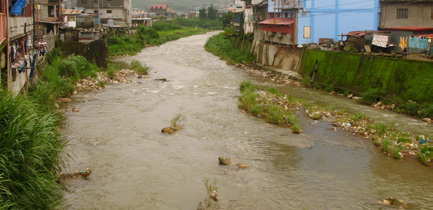


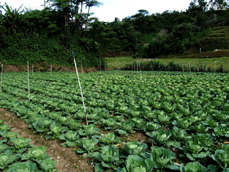
REFEREES
Joel M. Addawe, PhD
Esther R. Hufana, PhD
University of the Philippines-Baguio
BSU Retiree
Christine B. Adiova, PhD
Purisima P. Juico, PhD
University of the Philippines- Los Banos
Central Luzon State University
Percival B. Alipit, PhD
Mary Grace C. Lacanaria, PhD
BSU Retiree
Saint Louis University
Jerico B. Bacani, PhD
Eva B. Macugay, PhD
University of the Philippines-Baguio
Mariano Marcos State University
Teodora D. Balangcod, PhD
Judith Odanee G. Magwilang, MA
University of the Philippines-Baguio
University of the Cordilleras
Zenaida G. Baoanan, PhD
Cecilia A. Mercado, PhD
University of the Philippines-Baguio
Saint Louis University
Jimmy B. Fong, PhD
University of the Philippines-Baguio
Editorial Consultants
Carlito P. Laurean, PhD
Jones K. Feleciano, Ed.D
Vice President for Research and Extension
OIC-President
Editorial Staff
Lay-out Artist
Circulation Manager
Proofreaders
May D. Songaben
Anabelle O. Tostos
Anabelle O. Tostos
OVPRE- Publication Office
OVPRE- Publication Office
May D. Songaben
Mary Joy G. Maguide
OVPRE- Publication Office
Cover: Internet photos
This is a refereed Journal
This multidisciplinary scientific journal publishes
selected papers presented during the annual Benguet State University
Agency In-House Review (Agriculture, Forestry and Natural Resources, Social and Education Sectors)
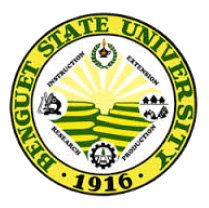
Benguet State University
RESEARCH JOURNAL
CHED Accredited Category B CMO No. 23 S. 2014
ISSN 0117-5297
No. 75
January-March 2016
CONTENTS
EFFECT OF GROUND BLACK PEPPER (Piper nigrum) AS FEED
ADDITIVE ON THE PERFORMANCE OF BROILERS
A. L. Chuparan, M. B. Atinyao and
M. A. D. Garcia
........................................................................................1-5
LOSS OF TRADITIONAL ROOTCROPS KNOWLEDGE(TRK)
AMONG SOME INDIGENOUS PEOPLES IN NORTHERN
PHILIPPINES
B. T. Gayao, D. T. Meldoz and
G. S. Backian
......................................................................................6-15
SOIL PROPERTIES OF AGRICULTURAL FARMS IN TWO
AGRO-ECOLOGICAL ZONES OF THREE MUNICIPALITIES OF
BENGUET
C. P. Laurean, C. P. Lucas and D. D. Kisim
....................................................................................16-29
EFFICACY AND PROFITABLITY OF ORGANIC FERTILIZERS ON
ARABICA COFFEE SEEDLING PRODUCTION
E. F. Dayap and V. Y. Amado
....................................................................................30-36
TRADITIONAL STORAGE AND UTILIZATION PRACTICES ON
ROOT AND TUBER CROPS OF SELECTED INDIGENOUS PEOPLE
IN THE NORTHERN PHILIPPINES
B. T. Gayao, D. T. Meldoz and
G. S. Backian
....................................................................................37-49
THE PRACTICE OF MICRO-TEACHING AMONG PRE-SERVICE
TEACHERS: FOR POLICY FORMULATION
J. V. Lubrica and M. A. B. Lubrica
....................................................................................50-59
CONTENTS
MOTIVATIONAL FACTORS AND THE SELF-PROJECTIONS OF
STUDENTS IN PURSUIT OF NURSING EDUCATION
J. L. Tayaben, D. S. Natividad, M. E. Gay-as,
L. F. Laron and C. R. L. Valles
...................................................................................60-68
AWARENESS AND SUPPORT OF BENGUET CONSTITUENTS
ON CORDILLERA REGIONAL AUTONOMY
M. A. Camfili, M. D. Gapasin, G. G. Banes,
C. M. Licyayo and R. S. Batani
...................................................................................69-82
MODELS FOR PACKING CIRCULAR OBJECTS INTO
RECTANGULAR SPACES
S. L. Oryan
...................................................................................83-93
THE IMPLEMENTATION OF WASTE SEGREGATION SCHEME IN
LA TRINIDAD, BENGUET
M. A. B. Lubrica
...................................................................................94-99
GENDER DIMENSIONS OF AND CHALLENGES IN LOCAL
HEALTH LEGISLATION
A. H. B. Kiwang
.................................................................................100-111
MODELS OF SCREENING BACHELOR OF SCIENCE IN APPLIED
STATISTICS AND BACHELOR OF SCIENCE IN INFORMATION
TECHNOLOGY FRESHMEN APPLICANTS
S. L. Oryan and S. Z. Beligan
...............................................................................112-117
21st CENTURY SKILLS AMONG THE FACULTY OF A TEACHER
EDUCATION INSTITUTION IN BENGUET
I. G. Parcasio
...............................................................................118-138
EXPLORING THE SEXUAL SCRIPTS OF ADOLESCENTS
A. H. B. Kiwang
...............................................................................139-150

Benguet State University Research Journal (BRJ) January-March 2016, 75: 1-5
Copyright 2016, Benguet State University
EFFECT OF GROUND BLACK PEPPER (Piper nigrum) AS FEED ADDITIVE
ON THE PERFORMANCE OF BROILERS
Amelia L. Chuparan, Marlene B. Atinyao and Mary Arnel D. Garcia
College of Agriculture,
Benguet State University
ABSTRACT
This study evaluated the effect of ground black pepper as feed additive
on the weight gain, feed conversion ratio, feed cost to produce a kg gain
in weight and morbidity and mortality rate of broilers. A total of 160
straight-run day-old broiler chicks were randomly distributed to four
treatments using the Completely Randomized Design (CRD). Each
treatment was replicated four times with ten birds per replicate. The birds
were fed with the same basal diets (chick booster, starter and finisher).
Black pepper (BP) was mixed to the basal diets at different levels: 0g
(T ), 5g (T ), 10g (T ) and 15g (T ) per kilogram of commercial feed. The
0
1
2
3
dietary treatments were fed for 35 days from day old.
There were no significant differences among treatments in the initial
and final weights and gain in weight of broilers. However, highly
significant differences were observed in the feed intake, feed conversion
ratio (FCR) and feed cost per kilogram of broiler produced. The birds
given 15g of ground black pepper per kg of commercial ration had the
best feed conversion efficiency of 1.68 and least cost of feeds (Php 45.46)
to produce a kilogram of weight. Apparently, no morbidity and mortality
were incurred in the birds receiving this dietary treatment.
This study shows that the inclusion of ground black pepper at a rate
of 15g/kg of commercial ration in broiler diet resulted in reduced feed
intake, improved feed efficiency of broilers, lower feed cost per kilogram
of broiler produced and better health performance.
Keywords: broilers, ground black pepper, body weight, feed intake, gain
in weight, feed conversion ratio, morbidity, mortality

Benguet State University Research Journal (BRJ) January-March 2016, 75: 6-15
Copyright 2016, Benguet State University
LOSS OF TRADITIONAL ROOTCROPS KNOWLEDGE (TRK) AMONG SOME
INDIGENOUS PEOPLES IN NORTHERN PHILIPPINES
Betty T. Gayao, Dalen T. Meldoz and Grace S. Backian
Northern Philippines Root Crops Research and Training Center
Benguet State University
ABSTRACT
The documentation of traditional knowledge on root and tuber crops
production and utilization was done prior to this study of determining the
loss of knowledge on the production and utilization of traditional root and
tuber crop commodities among the Ibaloi, Bago, Tingguian and Iyattuka
indigenous peoples in northern Philippines.
Results of this study showed that loss of traditional knowledge on
root and tuber among the indigenous peoples is a reality only among the
younger generation, particularly those born starting in the 1980’s. Loss
of knowledge among the younger generation pertains both to conceptual
and practical domain. Conceptual knowledge pertains to the diversity
and variety of roots and tubers, growing landscapes, cropping practices
and uses and local terms on roots and tubers. Practical skills pertain to
cultivation and utilization practices.
There is no loss or little loss of knowledge for those born before the
eighties. The one percent annual loss of knowledge among the 36-56 years
middle age group is in practical skills on the cultivation and utilization
practice, including the local terms for said cultivation and utilization
practices. An exception is among the Ibalois who exhibited not a loss but
an annual one percent increase in traditional roots and tubers knowledge.
Loss of knowledge for those born after the eighties is higher, ranging
from 37-64% reflecting an annual loss of 2-3% among the 15-35 years
age group of the Bagos and Tingguians and a one percent annual loss for
the younger Ibalois and Iyattukas.
Keywords:traditional root crops knowledge, Ibaloi, Bago, Tingguian
and Iyattuka, indigenous peoples

Benguet State University Research Journal (BRJ) January-March 2016, 75: 16-29
Copyright 2016, Benguet State University
SOIL PROPERTIES OF AGRICULTURAL FARMS
IN TWO AGRO-ECOLOGICAL ZONES OF THREE
MUNICIPALITIES OF BENGUET
Carlito P. Laurean, Craig P. Lucas and Dexter D. Kisim
College of Agriculture,
Benguet State University
ABSTRACT
The study was conducted in two agro-ecological zones of La Trinidad,
Buguias and Atok, Benguet. The objectives of the study were to determine the
physical and chemical properties of soils of agricultural farms; to determine
the pesticide residues in soils and plants; and to determine toxic heavy metals
in soils of agricultural farms. The two agro-ecological zones comprised of
mid-mountain zone with elevation ranging from 1,100 to 1,500 meters above
sea level represented by La Trinidad and Buguias, Benguet and high mountain
zone with 1,600 to 2,000 meters above sea level elevation represented by Atok,
Benguet.
For mid-mountain zone represented by La Trinidad, Benguet for wet season
sampling and Buguias, Benguet for dry season sampling, most of the soil
samples collected showed favorable values of bulk density, porosity, pH, organic
matter, available phosphorus and exchangeable potassium for crop production.
On the other hand, pesticide residue analysis on soil samples showed that
only Cypermethrin and Chlorpyrifos have values higher than the maximum
allowable concentrations. Toxic heavy metals like Mercury and Lead have
values lower than maximum residual limit. Likewise, only Chlorpyrifos was
detected in plants but its value is below the maximum allowable concentration.
For the high-mountain zone represented by Atok for wet and dry season
sampling, the results of the analysis showed that values of bulk density,
porosity, pH, organic matter, available phosphorus and exchangeable potassium
are also found favorable for crop production. For pesticide residue analysis in
soil, the samples were found to have residues of Dieldrin, Endosulfansulfate,
Cypermethrin, Chlorotalonil, Cypermethrin and Deltamethrin. However, only
Chlorothalonil and Cypermethrin were found to have values higher than the
maximum allowable concentration. Mercury and Lead were found to have
values below the maximum residual limit. No pesticide residues were detected
in crops.
Keywords: organic fertilizers, soil properties, physical properties, agricultural
farms

Benguet State University Research Journal (BRJ) January-March 2016, 75: 30-36
Copyright 2016, Benguet State University
EFFICACY AND PROFITABLITY OF ORGANIC FERTILIZERS ON ARABICA
COFFEE SEEDLING PRODUCTION
Emilia F. Dayap and Von Y. Amado
College of Agriculture
Benguet State University
ABSTRACT
This study was conducted to evaluate the efficacy of soil applied
formulated organic solid fertilizers (FOSF) supplemented with sprayed
formulated organic liquid fertilizers (FOLF) and to determine the cost and
return on potted Arabica coffee seedlings under greenhouse conditions.
Results showed that a mixture of 100 g FOSF/pot having 1.7 kg soil
and spray application of FOLF at a rate of 100 ml per 16 liters of water
every 15 days is effective and economical in the production of vigorous
Arabica coffee seedlings desired for planting.
Keywords: organic fertilizer, Arabica coffee, seedling, FOSF, FOLF

Benguet State University Research Journal (BRJ) January-March 2016, 75: 37-49
Copyright 2016, Benguet State University
TRADITIONAL STORAGE AND UTILIZATION PRACTICES ON ROOT
AND TUBER CROPS OF SELECTED INDIGENOUS PEOPLE IN THE
NORTHERN PHILIPPINES
Betty T. Gayao, Dalen T. Meldoz and Grace S. Backian
Northern Philippines Root Crops Research and Training Center,
Benguet State University
ABSTRACT
The indigenous people who reside on hills and mountains of the
Philippines like the Ivatans, Isnegs, Kalingas, Tingguians, Applais,
Bagos, Kankana-eys, Iyattukas, Ibalois, Kalanguyas, Bugkalots, Aetas
and Mangyans are known as root and tuber crops growers and consumers.
Unfortunately, there is lack of documentation and with the changing
lifestyles of the younger generation, traditional root and tuber crops
storage and utilization practices are at the risk of being forgotten, hence,
this study. Secondary data gathering, interview-workshops with key
informants and follow-up field visits were done to document and update
information.
Indigenous peoples have no practices that prolong storage life of taro
(Colocasia esculenta) and cassava (Manihot esculenta) though cleaned
and washed. Taro corms and cassava storage roots can last for seven days
if not mechanically damaged. For sweet potato (Ipomoea batatas), some
varieties are stored in wooden boxes for six to eight months. Harvested
roots and tubers of greater yam (Dioscocrea alata), lesser yam (Dioscorea
esculenta), tannia (Xanthosoma sagittifolium), arrowroot (Maranta
arundinacea), canna (Cannaceae) and yacon (Smallanthus sanchifolius)
are stored for four to six months provided the roots and tubers are washed,
cleaned and dried then kept in shaded area of the household. This can be
in the rice granary, in a wooden bin or in a pit under the house or under
the shade then covered or mulched with dried grasses, banana leaves and/
or sacks. All kinds of edible storage roots and tubers are consumed simply
as boiled or steamed, roasted and fried. On the other hand, chopped,
sliced or mashed, dried, ground and fermented roots and tubers are used
as ingredients in traditional dishes like guinataan, tupig, nilubyan, kisa,
tapey, binobodan, nawnaw, saloposop, sukit and others which are used
for various purposes such as substitute to rice as staple food, emergency
food, viand, snack food, fermented drink, flavoring and to some extent for
therapeutic purposes.
Keywords: storage and utilization, roots and tubers, indigenous people

Benguet State University Research Journal (BRJ) January-March 2016, 75: 50-59
Copyright 2016, Benguet State University
THE PRACTICE OF MICRO-TEACHING AMONG PRE-SERVICE TEACHERS:
FOR POLICY FORMULATION
Joel V. Lubrica and Maria Azucena B. Lubrica
College of Arts and Sciences,
Benguet State University
ABSTRACT
The supplementation of micro-teaching with video-recording can
provide benefits to pre-service teachers along pedagogical content
knowledge and reflective practice. This idea is based on the perceptions
of pre-service science teachers after they have viewed video-recordings
of their micro-teaching.
Although the participants felt some anxiety when informed that their
micro-teaching will be recorded on video, they also perceived that some
actions, both on the part of the subject teacher and on the micro-teacher,
can be done to alleviate this anxiety.
There was a significant negative relationship between micro-teaching
grade and perceived drawbacks of being under a video camera i.e the
higher the grade, the lesser the perceived extent of disadvantages of being
video-recorded. In general, the benefits of video-recording outweighed its
drawbacks. Thus, the combination of micro-teaching and video-recording
can assist in student development, in relation to both pedagogical content
knowledge and reflective practice. Consequently, an institutional policy
that requires the supplementation of micro-teaching with video-recording
may be considered.
Keywords: video-recording, micro-teaching, pre-service science teachers

Benguet State University Research Journal (BRJ) January-March 2016, 75: 60-68
Copyright 2016, Benguet State University
MOTIVATIONAL FACTORS AND THE SELF-PROJECTIONS OF STUDENTS
IN PURSUIT OF NURSING EDUCATION
Jude L. Tayaben, Doris S. Natividad, Maureen E. Gay-as,
Louisa F. Laron and Carol Ruth L. Valles
College of Nursing,
Benguet State University
ABSTRACT
Understanding motivating factors and scholastic experiences of
nursing students are important.
Exploratory-qualitative design was used involving nursing students as
informants during the key informant interview and focus group discussion.
The motivational driving forces based on the findings of the study were
personal, family and relatives, community and socio-economic forces.
In this order, care for self and family, interest of parents and relatives,
serving the community and working abroad provides higher income were
key motivational factors in choosing nursing as a profession.
As revealed by the study, culturally- sensitive environment, student
assistance, peer counseling and mentoring, student clubs and socialization
activities are important in meeting the needs of the students of a state
university. These areas are important in enhancing student admission
and retention policies that would provide more socially- acceptable
and effective school environment and develop a framework for career
guidance factors.
Keywords: Benguet schooling experiences, nursing students motivations,
Benguet nursing education and State University

Benguet State University Research Journal (BRJ) January-March 2016, 75: 69-82
Copyright 2016, Benguet State University
AWARENESS AND SUPPORT OF BENGUET
CONSTITUENTS ON CORDILLERA REGIONAL AUTONOMY
Matyline A. Camfili, Mursha D. Gapasin, Gigy G. Banes,
Christian M. Licyayo and Ruth S. Batani
College of Arts and Sciences
Benguet State University
ABSTRACT
With the aim of getting a ‘pulse’ on the awareness and preparedness
for the renewed move for Cordillera regional autonomy, two pulse
surveys were conducted by Benguet State University in the province of
Benguet in 2012 and 2013. The two pulse surveys was part of a region-
wide survey initiated by RDC-NEDA with the objective of gathering
inputs where information, education and campaign are needed. Using
modified multi-stage random sampling for municipalities and barangays
involving four and five municipalities in 2012 and 2013 respectively and
a systematic random sampling of households for respondents, results
showed that 20% (2012) and 22% (2013) of the residents in Benguet
are aware of the renewed move for regional autonomy. Similar results
were shown in a more recent survey in 2014, this time conducted by a
commissioned service provider, the MNADUNOP Development Studies.
Majority are still unaware of the contents and passage of House Bill 5595
passed in Congress for the third attempt for move for regional autonomy
and so cannot give opinion about the matter and there is reliance on the
decisions of officials, their organization or church membership. Radio
and television broadcasting as well as print media (newspapers) appears
to be the primary tool for communicating regional autonomy; however
these may not be enough to reach other sectors of the voting population.
Once again, the people of Benguet remain doubtful of the renewed move
for Cordillera regional autonomy despite the three times revision of the
House Bill for the establishment of a Cordillera Autonomous Region.
Keywords: autonomy, cordillera region, pulse survey, house bill 5595,
indigenous peoples

Benguet State University Research Journal (BRJ) January-March 2016, 75: 83-93
Copyright 2016, Benguet State University
MODELS FOR PACKING CIRCULAR OBJECTS INTO
RECTANGULAR SPACES
Serano L. Oryan
College of Arts and Sciences,
Benguet State University
ABSTRACT
Novel mathematical models for packing identical circular objects into
rectangular spaces are here presented. The study explores on different
packing patterns that tend to increase the population density of a given
rectangular space by way of systematic repositioning of the objects and
by applications of some trigonometric concepts in determining the effect
of repositioning to the vertical distances between the centers of the objects
across the contiguous rows. The results showed that if the dimension (rc)
of a rectangular space is rc = 8x5, where the unit of measure of the space
is the diameter of a circular object, then the default arrangement of the
objects can be repositioned so that the content of the space is maximum.
The results also showed that a rectangular space attains its maximum
content if row, r, is a multiple of [ 464
.
7
] and column c ≥ 5. In order to
determine whether the population density of a rectangular space can be
increased by applying some packing patterns, two mathematical models
are developed, through which the exact number of objects that can be
accommodated in a space is calculated. This study shows that there are
deterministic mathematical models of calculating the maximal number
of identical circular objects that can be packed into rectangular spaces.
In cases, however, where the rectangular container provides empty space
either on the row or column or both with length less than the diameter of
one circular object, then adjustment on the models may be made. Hence,
it is recommended that such particular cases have to be further explored
in future study.
Keywords: packing models, circular objects and rectangular spaces

Benguet State University Research Journal (BRJ) January-March 2016, 75: 94-99
Copyright 2016, Benguet State University
THE IMPLEMENTATION OF WASTE SEGREGATION SCHEME
IN LA TRINIDAD, BENGUET
Maria Azucena B. Lubrica
College of Arts and Sciences
Benguet State University
ABSTRACT
This study assessed the implementation of the waste segregation
scheme in La Trinidad. Assessment of the practices related to the
implementation showed that most of the variables were rated highly
a factor. The top five were as follows: residents segregate their waste
religiously; residents dispose their garbage according to schedule; local
government officials involve associations in the implementation; residents’
associations support the scheme by including this in their program of
activities and sanctions are given to those who do not follow the scheme.
Majority of the respondents or 53% considered the scheme a success.
Resulting logistic regression model showed that respondents who
considered that the practice of residents disposing their garbage according
to schedule as highly a factor in the waste segregation scheme were 1.3
times more likely to consider the implementation a success; those who
considered the practice of barangay officials meeting the residents and
explaining to them the scheme as highly a factor in the waste segregation
scheme were 5.8 times more likely to consider the implementation a
success; residents from Ambiong were 4.5 times more likely to consider
the implementation a success and those from Tawang were 1.3 times
more likely to consider the implementation of the scheme a success.
Keywords: waste segregation scheme, implementation, logistic
regression analysis and residents’practices

Benguet State University Research Journal (BRJ) January-March 2016, 75: 100-111
Copyright 2016, Benguet State University
GENDER DIMENSIONS OF AND CHALLENGES IN
LOCAL HEALTH LEGISLATION
Ann Heather B. Kiwang
College of Arts and Sciences,
Benguet State University
ABSTRACT
Gender mainstreaming continues to form part of the Philippine
government’s battle cry in its efforts to promote gender responsive
policies and programs for the advancement of gender equality in the
country. The success of these heath legislations and programs start with
the process and the persons involved in their formulation. Members or
representatives of the target beneficiaries of these laws and programs
should actively participate in setting health agenda and priorities.
This research was conducted to provide information on the gender
dimensions of and challenges in local health legislation with focus on the
health ordinances of Municipality of La Trinidad, Benguet, Philippines.
Using textual analysis, health concerns addressed by existing municipal
ordinances were identified. Interviews with key persons were conducted
to understand the formulation and enactment of these health ordinances as
well as to identify the problems met in their implementation.
Findings highlight the absence of women in the formulation and
enactment of health ordinances. In the municipal health care delivery
system, however, most of the personnel are women. Also, there is an
apparent lack of adequate consultation between health legislators and the
key persons charged with the implementation of the health ordinances
resulting to several problems in the implementation process which include
lack of personnel, lack of facilities and equipment as well as budgetary
constraints. Raising these issues at the local level can make a significant
difference in the delivery of health care services to intended beneficiaries.
Keywords: gender mainstreaming, health legislation

Benguet State University Research Journal (BRJ) January-March 2016, 75: 112-117
Copyright 2016, Benguet State University
MODELS OF SCREENING BACHELOR OF SCIENCE IN APPLIED STATISTICS
AND BACHELOR OF SCIENCE IN INFORMATION TECHNOLOGY
FRESHMEN APPLICANTS
Serano L. Oryan and Salvacion Z. Beligan
College of Arts and Sciences,
Benguet State University
ABSTRACT
The study determined the initial mathematical models of screening
freshmen applicants for Bachelor of Science in Applied Statistics (BSAS)
and Bachelor of Science in Information Technology (BSIT) programs
based on their input variables such as IQ and prior achievements in
English, Mathematics and Science. It also investigated the impacts of
these variables on the students’ college first semester performances during
SY 2011-2012. The respondents were classified and profiled based on
their data and corresponding models were formulated using Discriminant
Analysis method. The difference of the respondents’ college performances
were tested using T-test. The profile of the BSIT students showed that
group1 has higher IQ and lower grades while group 2 has lower IQ but
higher grades. The model yielded showed that grade in Science has the
stronger discriminating power. IQ has still the greatest discriminating
power. The model’s Y-value of 84.86 serves as the reference value. Group
1 has Y-values higher than 84.86 while group 2 has Y-values lower than
84.86.The profile of the BSAS students showed that, except for their IQ,
the two groups are not completely separated. The model showed that
grades in English and Mathematics have stronger discriminating powers,
next to IQ which has the greatest discriminating power. The model’s
Y-value is 104.03 and group 1 has Y-values higher than 104.03 while
group 2 has Y-values lower than 104.03. In both BSIT and BSAS, groups
1 and 2 showed no significant difference in their first semester college
performances, indicating that at the moment group assignment is yet to be
a determinant of academic achievement. The primary implication of the
study is that screening can be made objective, efficient and cost-saving by
mathematically modeling the process.
Keywords: mathematical models, BSAS and BSIT freshman applicants

Benguet State University Research Journal (BRJ) January-March 2016, 75: 118-138
Copyright 2016, Benguet State University
21st CENTURY SKILLS AMONG THE FACULTY OF A TEACHER
EDUCATION INSTITUTION IN BENGUET
Imelda G. Parcasio
College of Teacher Education,
Benguet State University
ABSTRACT
Globalization and the increasing pervasiveness of digital technologies
are the pressing characteristics of the world at the turn of this century.
This study was conducted to assess the proficiency of the faculty staff
and their cognizance to deliver the knowledge needed by the 21st century
learners. The study employed the quantitative and qualitative method of
inquiry, using questionnaire, interview and document analysis to gather
data.
Results revealed that the faculty are very proficient of the 21st Century
Skills along learning and innovation, information, media and technology
skills and life and career skills with a mean of 3.34. The male respondents
are very proficient in critical thinking and problem-solving skills (3.73).
The females are very proficient in social and socio-cultural skills (3.47).
Those with 1-5 years in teaching are very proficient in initiative and self-
direction (3.37); those with 6-10 years in teaching are proficient in social
and cross-cultural skills (3.41); those with 11-15 years in teaching are very
proficient in productivity and accountability (3.93) and those with 16 and
above years in teaching are very proficient in social and cross-cultural
skills (3.92). The challenges faced are integration of ICT in facilitating
lessons, eliciting student’s creativity, critical thinking and problem
solving skills, slow acquisition of new equipment, lack of facilities to
utilize, poor media literacy and diversified learners.
Keywords: 21st century skills, 21st century teacher, proficiency
Benguet State University Research Journal (BRJ) January-March 2016, 75: 139-150
Copyright 2016, Benguet State University
EXPLORING THE SEXUAL SCRIPTS OF ADOLESCENTS
Ann Heather B. Kiwang
College of Arts and Sciences
Benguet State University
ABSTRACT
Discussions on matters of sex and sexuality continue to be a cultural
taboo in Philippine society. This is in spite of the studies which reveal
an incessant increase in cases of teen pregnancy in the Philippines. As
an educational institution, schools must take an active role in helping
students understand and deal with their sexuality issues. This study aims
to provide a deeper knowledge and understanding on the sexual scripts
of students. Using an open-ended questionnaire, the sexual desires and
sexual behaviors of selected students enrolled in Social Science 12 were
known.
Findings reveal gendered sexual desires among the students. Most of
the females define their sexual desires within the context of a relationship
or a potential relationship while males seem more inclined to define sexual
desires in relation to sexual satisfaction. Male’s definition of sexual desires,
compared to females, is more physiological than emotional. Furthermore,
many of the female students have negative perception of themselves for
experiencing sexual desires. Also, there is an apparent difference in the
context within which male sexual behaviors occur compared to females.
Most of the sexual experiences of males were triggered by porn movies or
magazines they watched. Many claim to have felt proud and satisfied after
a sexual experience. On the other hand, sexual experiences of females
occurred mostly within the context of a romantic relationship. Some felt
more loved and secure. Others felt disgusted and embarrassed.
Sex continues to be a cultural taboo in daily conversations in the family
and in school. Religion remains a strong influence in the perception of the
students about sex.
Keywords: sexual scripts, cultural scripts, interpersonal scripts,
intrapersonal scripts
INFORMATION FOR CONTRIBUTORS
(Abridged/improved from the editorial policies of the Benguet State University)
1. All manuscripts must be the result of research activities (technical or social) that are relevant to the development
thrust of the University and should not have been published elsewhere.
2. Acceptance of manuscript is on the basis of the review and approval by a corps of technical editors and selected
referees.
3. Original photos should be submitted in PNG or JPEG format with corresponding captions.
4. The manuscript should not exceed 40 pages, typed double spaced in 12-point Times New Roman on one side of
81/2” paper with margins of 3.81 cm on the left and 2.54 cm top, right and bottom and must be submitted in hard
and electronic copy via bsupublications@gmail.com using MS Word Program.
5. The manuscript should be organized in the following order: (a) Title; (b) Authors/s; (c) Authors/s position;
(d) Abstract; (e) Introduction; (f) Materials and Methods; (g) Results and Discussion; (h) Conclusions and
Recommendations; (i) Acknowledgment, optional; and (j) Literature Cited ; and written all centered.
6. The title should be a precise and concise description of the contents of the manuscripts without abbreviations and
typed in upper case. If the paper is a portion of a larger manuscript, which shall be serialized and will be indicated
in a superscript followed by a brief explanation.
7. The author(s) name(s) is/are written in this way: initial letter for the middle names only, first and family names in
full and typed in title case. Senior author comes first in case of more than one author.
8. The abstract must be 200 words or less, summarizing the main points of the articles.
9. The introduction should contain scope and statement of the problem, brief survey of previous work and objectives
and importance of the study.
10. Citations in the text follows the name and year system, e. g.
Single Author:
(Adeyemo, 2010), Yeo (2009) or Boquiren (n.d.)
Two Authors:
Pladio and Villasenor (2004), (Pladio and Villasenor, 2004)
More than Two Authors:
Folbre et al. (2011) or (Folbre et al., 2011).
11. Materials and methods should describe very concisely but comprehensively the materials used, techniques, and
lay-out of the research.
12. Scientific names and other foreign expressions such as in situ, et al., i.e., and other similar expressions are italicized.
Technical terms, abbreviations and acronyms must be defined.
13. In abbreviating or using acronyms, the System International-Units (SI) of the metric system should be followed.
Such abbreviations or acronyms should be written first in full before the truncated terms in parenthesis, e.g. thin-
layer chromatography (TLC). If this information is given in the abstract, it should be re-identified when mentioned
the first time.
14. The results should be presented logically and in objective way and conclusions stated as valid facts.
15. The discussion of results should lead to interpreting significance and /or possible similarity or discrepancy from
previous findings.
16. A statement on conflict of interest should be declared by authors before the Acknowledgment section. Where
appropriate, Conflict of Interest statements may be in instances such as:” There are no known conflicts interests
associated with the publication” or “There has been no significant financial support for the work that could have
influenced its outcome.” Whenever appropriate, acknowledgements are made relevant for contributions in terms
of financial and technical support.
17. Literature cited in the text should be indicated as follows: Consolacion (2000) or (Consolacion, 2000); for two
authors, Colting and Maddul (1999) or (Colting and Maddul, 1999); for more than two authors, Bucu et al. (1999)
or (Bucu et al., 1999).
18. Electronic sources must be cited as follows: author (s), year, title, date of retrieval and the complete Uniform
Resource Locator (URL) of the site.
19. Listing of literature cited is by author(s) in alphabetical order. The list contains: author (s), year, title of literature,
publisher, address of publisher, volume and issue numbers and inclusive pages (printed as 1(2):1-9). Names of
authors are typed in upper case: for single author, surname (separated by a comma) first before the initials of the
given and middle names; for multiple authors, surname then initials of senior author followed by initials then
surnames of succeeding authors. Authors are separated by commas.
Single author:
Mondejar, L.A. 1998. Understanding Student Judgments of Teaching Performance: A Conjoint Approach.
Unpublished Doctoral Dissertation, University of the Philippines. Diliman. Quezon City.
Durano, M. 2008. From profit to provisioning: A gender equitable public policy. Development Alternatives
with Women for a New Era. QC: Miriam College.
Eriksen, T. 2001. Small Places, Large Issues. An introduction to Social and Cultural Anthropology. 2nd ed.
London: Pluto Press.
Two authors:
Hallauer, A. R. and F. O. Miranda. 1980. Quantitative Genetics in Maize Breeding. Iowa State University
Press. Ames, Iowa. Pp. 49-52.
Carrasco, C. and M. Serrano. 2011. Lights and Shadows of Household Satellite Accounts: The Case of
Catalonia, Spain. Feminist Economics 17 (2): 68-85. IAFFE: Routledge Taylor and Francis Group.
Crisologo, L. C. and L. Berlage. 2006. Bargaining in rural households: a study of decision on labor market
participation in the Cordillera. The Philippine Review of Economics. 48 (2): 249- 537.
More than two authors:
Linsley, R., J. Franzini, D. Freyburg and G. Tchobanoglous. 1992. Water Resources Engineering. 4th ed.
McGraw-Hill, Inc. New Jersey, USA.Pp. 510-532.
Aguilar, N. O., B. L. Cardenas and M. A. O. Cajano. 2000. Spore and Seed bearing Plants of Mount Pulag,
Benguet, Philippines. Museum of Natural History. UPLB, College, Laguna, Philippines.
Braunstein, E. B., I. P. Van Staveren and D. Tavani. 2011. Embeding care and unpaid work in Macroeconomic
Modelling. A structural Approach. Feminist Economics. 17, 4-31.
20. If necessary, protocols for manuscript preparation can be requested from the Editorial Board.
21. Please see the latest issue of the Journal for concrete details as to format.
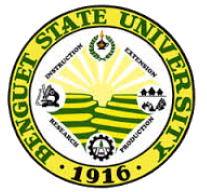
BSU Research Journal No. 75
BSU Research Journal No. 75
VISION
A premier State University in Asia.
MISSION
Development of people imbued with academic excellence, social conscience and productivity; and
actively generating and promoting environment-friendly, useful technologies to improve quality of life.
GOALS
1. Strengthen and sustain a working environment conducive for excellence;
2. Provide quality education that will produce globally competitive and well-rounded graduates;
3. Provide quality and client-responsive research and extension services;
4. Strengthen and enhance institutional capability in generating revenue towards self-reliance
5. Develop and strengthen quality management system towards economy; and
6. Strengthen and expand private public partnership.
PURPOSE
* To provide quality education that will produce globally-competitive graduates;
* To generate and disseminate appropriate knowledge and technologies that will promote sustainable
resource development;
* To strengthen and enhance institutional capability in generating revenue towards self-reliance;
* To establish competent and effective services geared towards efficiency and economy; and
* To develop harmonious and cooperative University Community relationships.
Benguet State University
RESEARCH JOURNAL
All communications should be addressed to:
THE EDITOR
BSU Research Journal
Benguet State University
La Trinidad 2601 Benguet, Philippines
Telefax: (+6374) 422-5547
Email address: bsupublications@gmail.com
Website: www.bsu.edu.ph
22 22